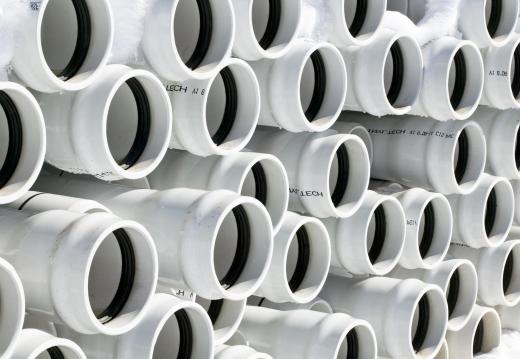Reducing couplings are pipe fittings designed to allow pipes of dissimilar diameters to be joined together. These fittings are typically used where small consumer or process feeder lines are joined into large supply circuits or where small diameter fittings are installed. Reducing couplings are available for most common pipe types, including steel, copper and PVC, and for a wide range of pipe size and configuration combinations. These fittings may be screw-on, compression, brazing or adhesive attachment types, depending on the relevant application.
Joining tubing or pipes of differing diameters requires the use of a reducing coupling. These special pipe joining fittings are designed to make the coupling of a wide range of different pipe sizes easy while maintaining the integrity of the pipe circuit. Reducing couplings are typically no more than standard, two-way couplers with a stepped down profile and two dissimilar sized entries. Their designs can, however, accommodate multiple connections, elbows or bends and be formed into Y, T or cross junctions. Most pipe types, such as copper, steel or PVC, have a range of general purpose or application-specific reducer couplings available for them.

The reducing coupling used on steel pipes is generally a steel casting with standardized threads cut into either end. These couplers will normally feature a simple, stepped down profile and screw onto the two lengths of pipe in the same way a standard pipe joint does. Reducing flange joints are also available and have a section of stepped diameter pipe between the two flanges. Welded reducing coupling designs are similar to screw on examples but feature no threads.
A copper tubing reducing coupling is similar in design to its steel pipe counterpart and is typically brazed or soldered onto the two pipes. Some copper pipe reducers may be of a compression-type design, depending on the application. Much like steel flange joints, these fittings feature two differently sized screw down compression fittings joined by a length of stepped tubing. The bottleneck profile reduction common to metal fittings is also common among PVC reducing couplings. These fittings are typically attached to the two pipe ends with a PVC adhesive to ensure a good seal.
The reducing coupling can also be used to insert small diameter ancillary equipment, such as valves, flow meters and inspection or maintenance ports, into large diameter pipe circuits. This type of reducing coupler is most often used at termination points on high-pressure petrochemical industry pipe circuits. As few pipe circuits consist of one size of pipe throughout, the reducing coupling is a critical part of the layout of most pipe installations.
